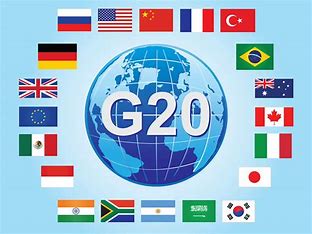Volume represents an increase of more than 130% compared to 2019, according to data from Brazil’s Revenue Service
02/23/2024
/i.s3.glbimg.com/v1/AUTH_37554604729d4b2f9f3eb9ad8a691345/internal_photos/bs/2024/m/W/CpROoUTsGJKLEeJavgPg/231123mannrichevasconcelosadvogados013.jpg)
Breno Vasconcelos — Foto: Rogerio Vieira/Valor
Tax offsets significantly increased in the first year of the Lula administration, reducing the federal government’s revenue last year by R$242 billion, equivalent to 2.2% of the Gross Domestic Product (GDP). This figure is a record and represents an increase of more than 130% compared to 2019, marking the start of an escalation verified by Brazil’s Federal Revenue Service, according to data obtained through the Access to Information Act by Valor.
Since May 2003, the start of the historical series, the federal government has failed to collect R$1.6 trillion from offsets, a target of the Finance Ministry for achieving fiscal goals.
More than a third of the volume in 2023 refers to credits from court decisions. There were R$82.7 billion offsets, the third highest amount since the recording began. In 2018, they accounted for just over 5% of total settlements. Since 2019, they have made up more than 20% of this volume—the peak was in 2021 when judicial credits accounted for almost half of the total offset with the Federal Revenue Service. However, in the last two years, they have slightly fallen, between 5% and 10%. Valor PRO, Valor’s real-time information service, reported this information on Thursday (22).
The high volume of tax offsets from lawsuits was the leading cause for the government to issue Provisional Presidential Decree 1202/2023, which limited the right to offset tax credits from court decisions to R$10 million. Another Federal Revenue Service spreadsheet indicates that, in the last five years alone, credits above R$10 million have frustrated tax collection by R$320.5 billion.
According to the Finance Ministry, the offsets for the “thesis of the century” alone—the exclusion of ICMS (similar to the Value-Added Tax) from the PIS (tax to fund a cash transfer program) and Cofins (social security tax) calculation base, cost the federal government more than R$60 billion last year. This was one of the main reasons, according to the government’s economic team, for the R$230 billion deficit recorded in 2023.
In 2024, Finance Minister Fernando Haddad has the task of increasing revenues to achieve the goal of zero primary results in public accounts. The limit on offsets, according to the Federal Revenue Service, could generate an extra R$20 billion inflow in 2024 and help the government reach this goal.
However, the limit has not yet produced results. Figures released on Thursday (22) show that in January 2024, even with the effects of Provisional Presidential Decree 1202/2023, they amounted to R$27 billion. Nonetheless, the Federal Revenue Service estimates that this impact will positively affect tax collection throughout the year.
Although it didn’t take effect in January, the Independent Fiscal Institution (IFI) projects that the limit on offsets could generate a revenue gain for the government of R$26.2 billion in 2024, R$40.1 billion in 2025, R$55.6 billion in 2026, and R$72.6 billion in 2027, in nominal values.
Offsets allow taxpayers to use their credits with the Federal Revenue Service to offset their debts. They use overpaid taxes or amounts obtained through court decisions to offset other federal taxes they owe.
The tax office’s data also shows that in 2023, the total number of offsets was 11% higher than in 2022, when this type of revenue loss reached R$215 billion. The “other credits” category set a record in 2023, totaling R$73.5 billion.
Lawyers suggest that this category likely includes credits from the exclusion of ICMS from the PIS and Cofins base. The Finance Ministry states that it is impossible to know which tax the credit refers to or the legal thesis behind them, as this information is not stored “in a structured way in the information systems.”
Compared to the last decade, there has been an annual surge in offsets: since 2013, the volume has more than quadrupled, given that 10 years ago, offsets amounted to R$54 billion.
The significant growth began in 2019 due to the so-called “thesis of the century” (a landmark legal decision in which the Federal Supreme Court ruled that the ICMS tax should not be included in the PIS and Cofins tax bases, significantly impacting businesses with potential substantial tax refunds), and peaked in 2021, when the Federal Supreme Court ruled on the motions for clarification in the case and established that the ICMS should be highlighted on the invoice. Secondary legal arguments and interpretations, known in Brazil as “teses filhotes,” also contributed to the increase in offsets, albeit to a lesser extent.
Until this second Supreme Court ruling, many cases were on hold, awaiting the position of the justices, which explains the “late” peak since the merits of the case were judged in 2017, said tax lawyer Leandro Augusto, a partner at AleixoMaia law firm.
Mr. Augusto notes, however, that after the peak, the volume of judicial credits, the subject of the restriction in Provisional Presidential Decree 1,202/2023, has decreased over the past two years. “There is a downward trend, especially when compared to tax collection,” he said. For him, that demonstrates the fragility of the argument supporting the Provisional Presidential Decree. “There has been an increase in offsets due to administrative and not judicial measures, both in absolute and relative terms,” he added.
Breno Vasconcelos and Maria Raphaela, partners at Mannrich e Vasconcelos Advogados, note that when all PIS/Cofins issues are considered, credits arising from payments of these contributions represent, across the entire historical series, 19.38% of total general offsets and 29% of judicial offsets.
“This data, coupled with previous analyses, confirms the diagnosis of those proposing the reform of taxation on consumption, that these contributions are very complex, subjecting taxpayers to dozens of special regimes and with disputes involving even the use of credits in the non-cumulative system [a topic that represented the largest PIS/Cofins litigation for publicly traded companies in 2021],” they stated.
Lawyer Fabio Calcini, from the law firm Brasil, Salomão e Matthes Advogados, notes that the majority of offsets in 2023 are for taxes overpaid by taxpayers. Following the “other credits” category, the largest amounts are for Cofins and IPI (tax on industrialized products) refunds, negative Corporate Income Tax (IRPJ) balances, and other undue payments.
Together, these categories accounted for R$128.5 billion last year, corresponding to 53% of the total offset by taxpayers with the Federal Revenue Service. “The system is flawed in several respects and ends up charging the taxpayer, then authorizing a refund as an offset. It’s not abuse or fraud on the part of the taxpayer; it’s their right to receive what they paid unduly,” stated Mr. Calcini, who is also a professor at the Getúlio Vargas Foundation (FGV).
*Por Guilherme Pimenta, Marcela Villar, Beatriz Olivon — Brasília and São Paulo
Source: Valor International

/i.s3.glbimg.com/v1/AUTH_37554604729d4b2f9f3eb9ad8a691345/internal_photos/bs/2021/m/P/P1nLQFQpGSNrp7BsulsA/burger-90462936.jpg)
/i.s3.glbimg.com/v1/AUTH_37554604729d4b2f9f3eb9ad8a691345/internal_photos/bs/2024/k/B/fnTii3QBen93Al81hPqQ/010823premioinovacao189.jpg)
/i.s3.glbimg.com/v1/AUTH_37554604729d4b2f9f3eb9ad8a691345/internal_photos/bs/2024/e/v/W39T8YS12lhhJ5vJJs0w/53452669267-0fd5d512f8-o.jpg)
/i.s3.glbimg.com/v1/AUTH_37554604729d4b2f9f3eb9ad8a691345/internal_photos/bs/2024/T/C/fzGMQMS5iyDEV11UJaRg/96a545ea9cd546f78ba39ea9f6d56577-0-41b926d4e7574138874e0226dbfaac8c.jpg)
/i.s3.glbimg.com/v1/AUTH_37554604729d4b2f9f3eb9ad8a691345/internal_photos/bs/2024/2/A/FNsIr3RAetrKp7Bbwazg/20240220150014-mg-3938.jpg)
/i.s3.glbimg.com/v1/AUTH_37554604729d4b2f9f3eb9ad8a691345/internal_photos/bs/2024/n/e/AUN0ieRc69yfuCpOsayg/53319201500-d20faba0c4-o.jpg)
/i.s3.glbimg.com/v1/AUTH_37554604729d4b2f9f3eb9ad8a691345/internal_photos/bs/2024/2/k/mPCsAJTdaRC8fr2eLKZA/debora-20mendeleh-20-claritas.jpg)

/i.s3.glbimg.com/v1/AUTH_37554604729d4b2f9f3eb9ad8a691345/internal_photos/bs/2024/r/O/O8Sdk6QD2tqFbE802dKA/cndi-mcamgo-abr-22012024-17.jpg)